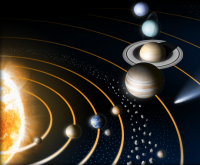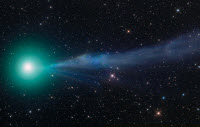 In this month's edition:
In this month's edition:
- Planetary Skylights: Venus, Mars, Mercury, Jupiter and Saturn
- Meteor Activity: Virginids, Alpha Scorpiids and Lyrids
- The Stellar Baker's Dozen challenge
- March's Partial Solar Eclipse: how it turned out
- The Lion and the Serpent
- April 2015 Sky Charts
- Log in to post comments

 Originally expected to be a reasonable binocular object under dark skies, comet Lovejoy, C/2014 Q2, has surprised us all, becoming a naked eye object visible in the winter sky to the South during January...
Originally expected to be a reasonable binocular object under dark skies, comet Lovejoy, C/2014 Q2, has surprised us all, becoming a naked eye object visible in the winter sky to the South during January... 